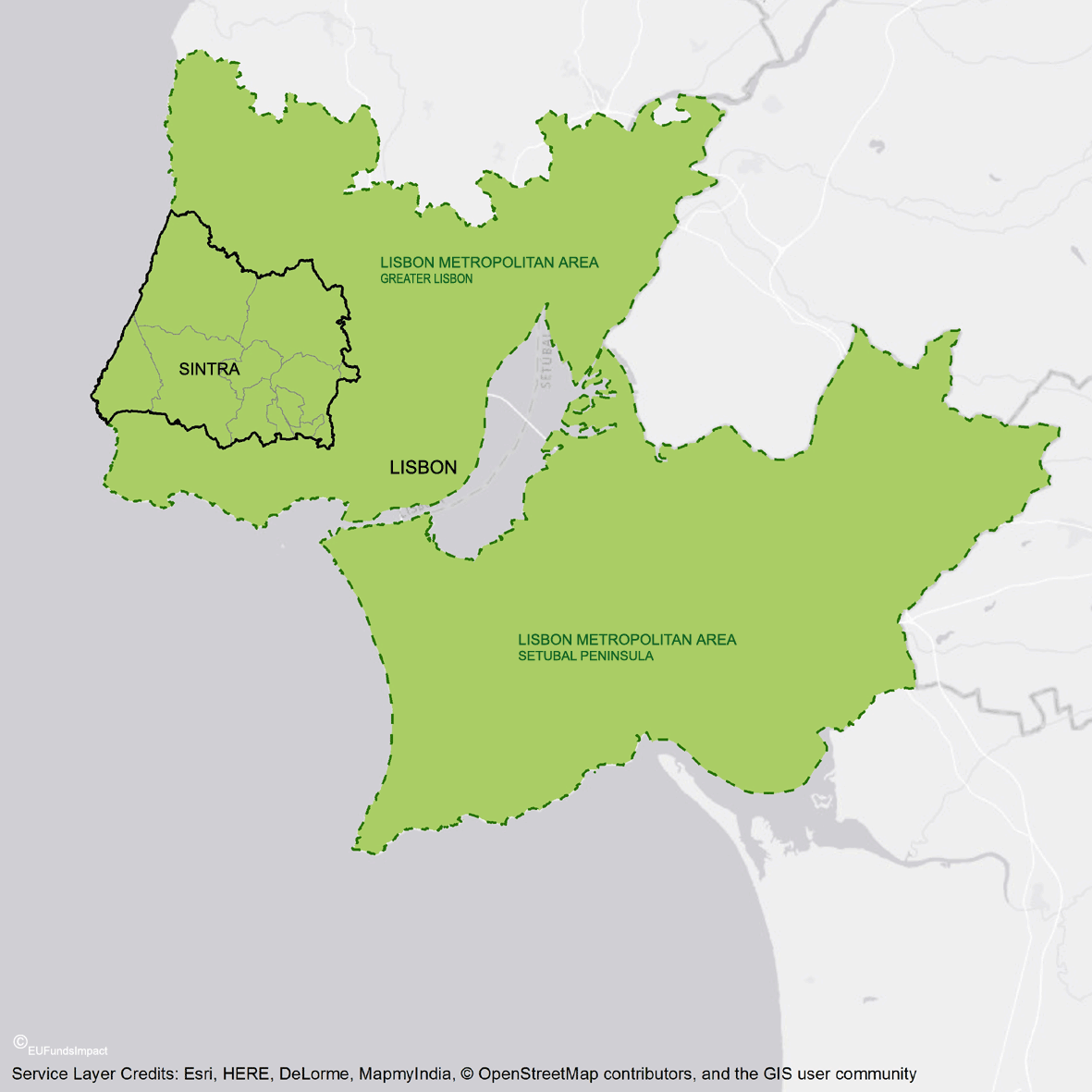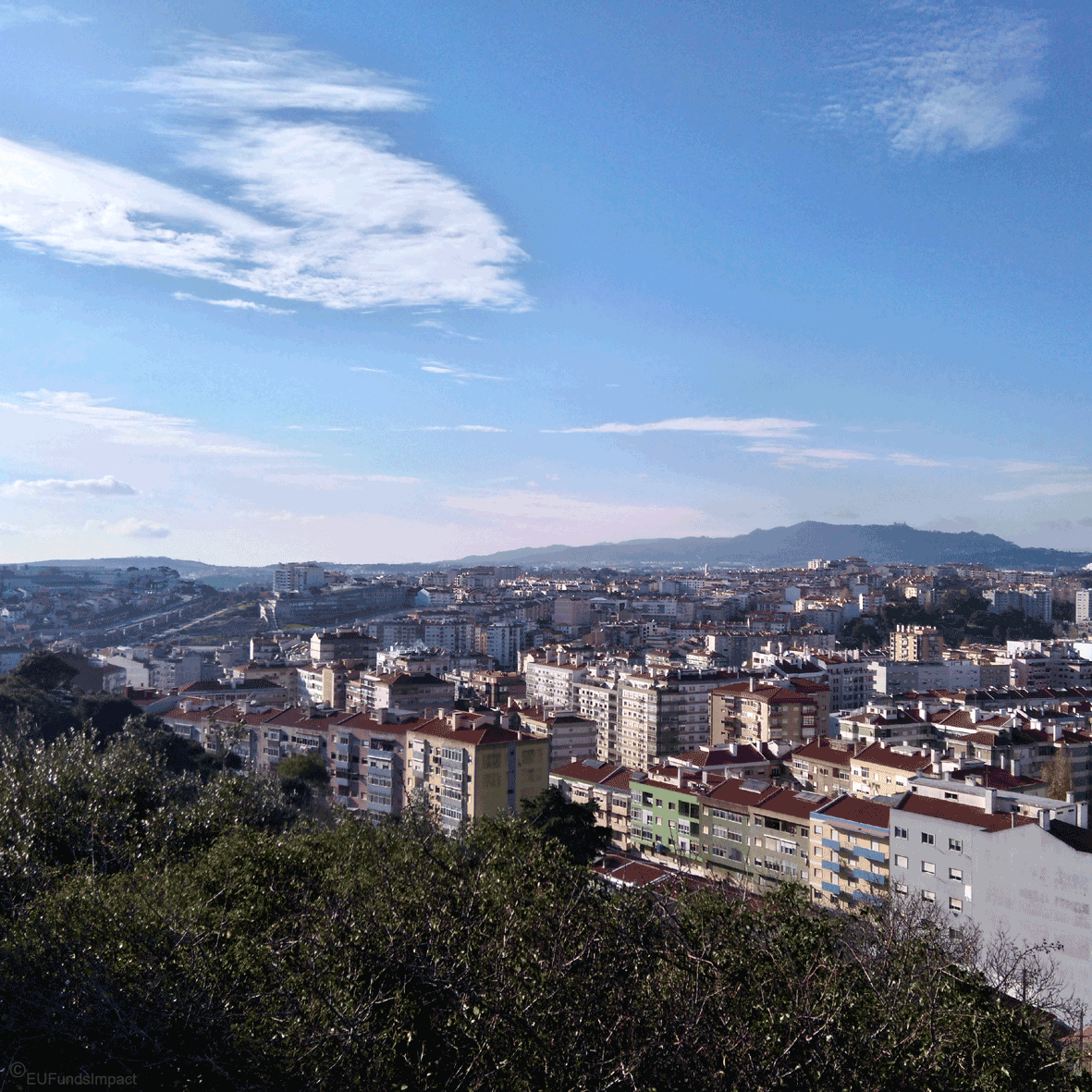


Lisbon Metropolitan Area has a surface of 3 015,24 km2 and corresponds to the territory that involves Tagus river estuary in north and south banks (Greater Lisbon and Setubal Peninsula). It comprises 18 municipalities (9 in Greater Lisbon and 9 in Setubal Peninsula) with a total population of 2 821 901 inhabitants (Greater Lisbon with 2 042 502 inhabitants and 779 339 in the Setubal Peninsula).
Sintra municipality, with 377 835 inhabitants, corresponds to a suburban corridor, 20 km west of Lisbon, and is the largest municipality in Lisbon Metropolitan Area, after Lisbon (547 733 inhabitants). It has increased its population from 226 428 inhabitants in 1980 (almost the double of 1970) to 260 951 inhabitants, in 1991, up to 363 556 in 2001 and to 377 837 in 2011 while, in the same period, Lisbon Metropolitan Area passed from 2 538 893 in 1981 to 2 540 276 inhabitants, in 1991, until 2 661 850, in 2001, reaching, in 2011, 2 821 697 inhabitants.
Sintra municipality, served by a metropolitan radial motorway (IC19) and a suburban railway line both linking Lisbon to Sintra town, and its strong urban residential development, although a poorly developed network of urban facilities, a disorderly urban fabrics and a poorly integrated mobility networks, presents a set of very representative characteristics of suburban urban growth, with the inconsistencies inherent of a fragile territorial planning, a situation that has been accentuated during the study period by the large investments in infrastructure supported by the European Structural Funds.
What explains its choice as case study.




